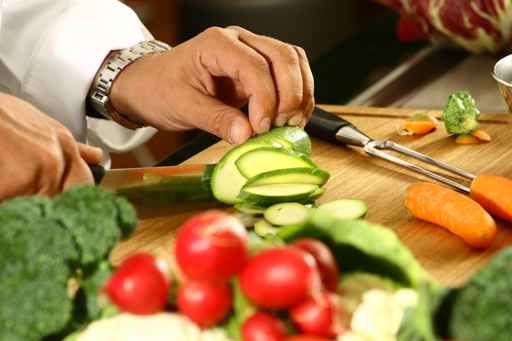The Reluctant Gourmet: Wood or Plastic?
 As woodworkers, when it comes to cutting boards, if it’s not made out of wood, it’s not worth using.
As woodworkers, when it comes to cutting boards, if it’s not made out of wood, it’s not worth using.
While that’s our first go-to-ground instinct, the recipient may have lots of questions about wood being a safe material for the purpose. After all, for many years, wood was seen as a material that harbored dangerous microbes and other nasties while plastic was seen as a more sanitary substitute.
This article goes into great detail and links to laboratory analysis about the nature of both materials and shows how wood actually fares very well when compared to its synthetic counterpart.
Armed with this information, you can explain how the block maple end grain wooden cutting board you built for Aunt Sally this holiday season is safe for her use in her kitchen – and back it up with sound reasearch.

Talk about consensus. NOT! I know it goes against the grain of woodworkers, but we use a lot of plastic cutting boards and just cycle them through the dishwasher. While I love the look of a butcher block, it can’t go through the dishwasher. We like to spend the time in the kitchen cooking, not cleaning.
Plus, when plastic cutting board starts to stain or gets too much wear, it’s goes to my shop for jigs.
Oh, Vic, you are the BOMB!
I betcha you make the BEST PB&J sammiches anywhere 😉
You know it Tom! They key is extra, extra J;)
I’m with Vic on this one. I have a bunch of polyethylene cutting boards that go from my counter into the dishwasher, where I know that they will be sanitized. I just don’t want to mess around with “what ifs” when it comes to raw chicken residues, for example. Where I want wood during my food prep, however, is in my hands. In my view, fine knives (which I will wash by hand anyway to preserve their edges) should have equally fine, wooden handles. I can’t stand the Wusthof and Henkels knives that you see in Williams-Sonoma with their awful, ugly plastic handles! Great metallurgy mated with mass-market, soulless handles… what a waste. Give me a well-balanced high-carbon chef’s knife with a rosewood or ebony handle, full tang, and three rivets, and I’m a happy guy.
Hey Tom,
The sanitary effects of wooden cutting boards is nothing new really. Twenty years ago, when I was a food science grad student, they were teaching us that wood was safer than plastic.
Tom
It’s true, Tom, but I still know a lot of folks who gasp when they see I use a wooden board because they ‘know’ plastic is better. Old myths die hard, I guess…